WELCOME TO MONGOLIA!
The Government of Mongolia announced 2023-2025 as the “Year of Visiting Mongolia” and issued a resolution. Within the scope of this resolution, we are excited to announce the
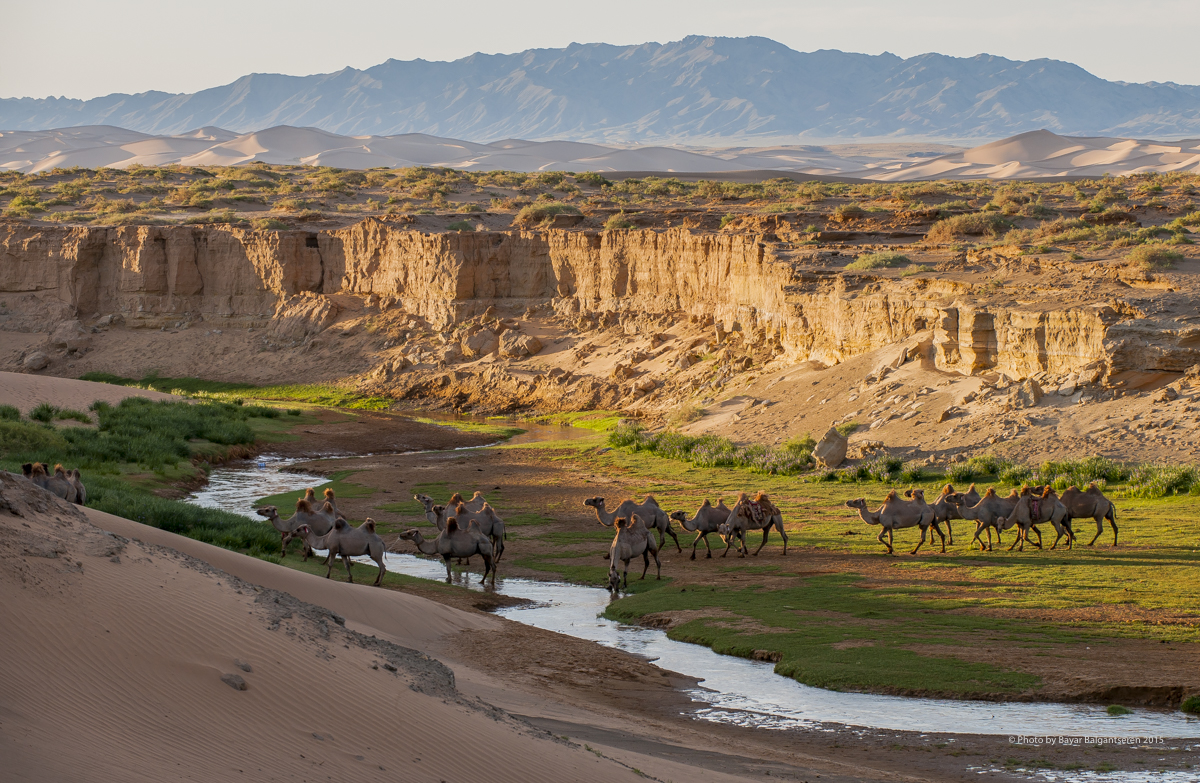
Mongolia is a landlocked country in East Asia, bordered by Russia to the north and China to the south. It covers an area of 1,564,116 square kilometres (603,909 square miles), with a population of 3.5 million, making it the world's most sparsely populated sovereign state. Mongolia is the world's largest landlocked country that does not border a closed sea, and much of its area is covered by grassy steppe, with mountains to the north and west and the Gobi Desert to the south. Ulaanbaatar, the capital and largest city, is home to roughly half of the country's population.

The territory of modern-day Mongolia has been ruled by various nomadic empires, including the Xiongnu, the Xianbei, the Rouran, the First Turkic Khaganate, the Second Turkic Khaganate, the Uyghur Khaganate and others. In 1206, Genghis Khan founded the Mongol Empire, which became the largest contiguous land empire in history. His grandson Kublai Khan conquered China proper and established the Yuan dynasty. After the collapse of the Yuan, the Mongols retreated to Mongolia and resumed their earlier pattern of factional conflict, except during the era of Dayan Khan and Tumen Zasagt Khan. In the 16th century, Tibetan Buddhism spread to Mongolia, being further led by the Manchu-founded Qing dynasty, which absorbed the country in the 17th century. By the early 20th century, almost one-third of the adult male population were Buddhist monks.[10][11] After the collapse of the Qing dynasty in 1911, Mongolia declared independence, and achieved actual independence from the Republic of China in 1921. Shortly thereafter, the country became a satellite state of the Soviet Union. In 1924, the Mongolian People's Republic was founded as a socialist state.[12] After the anti-communist revolutions of 1989, Mongolia conducted its own peaceful democratic revolution in early 1990. This led to a multi-party system, a new constitution of 1992, and transition to a market economy.Climate: Mongolia is known as the "Land of the Eternal Blue Sky" or "Country of Blue Sky" (Mongolian: "Mönkh khökh tengeriin oron") because it has over 250 sunny days a year. Most of the country is hot in the summer and extremely cold in the winter, with January averages dropping as low as −30 °C (−22 °F). A vast front of cold, heavy, shallow air comes in from Siberia in winter and collects in river valleys and low basins causing very cold temperatures while slopes of mountains are much warmer due to the effects of temperature inversion (temperature increases with altitude).
Naadam Festival: The Three Manly Games of Mongolia
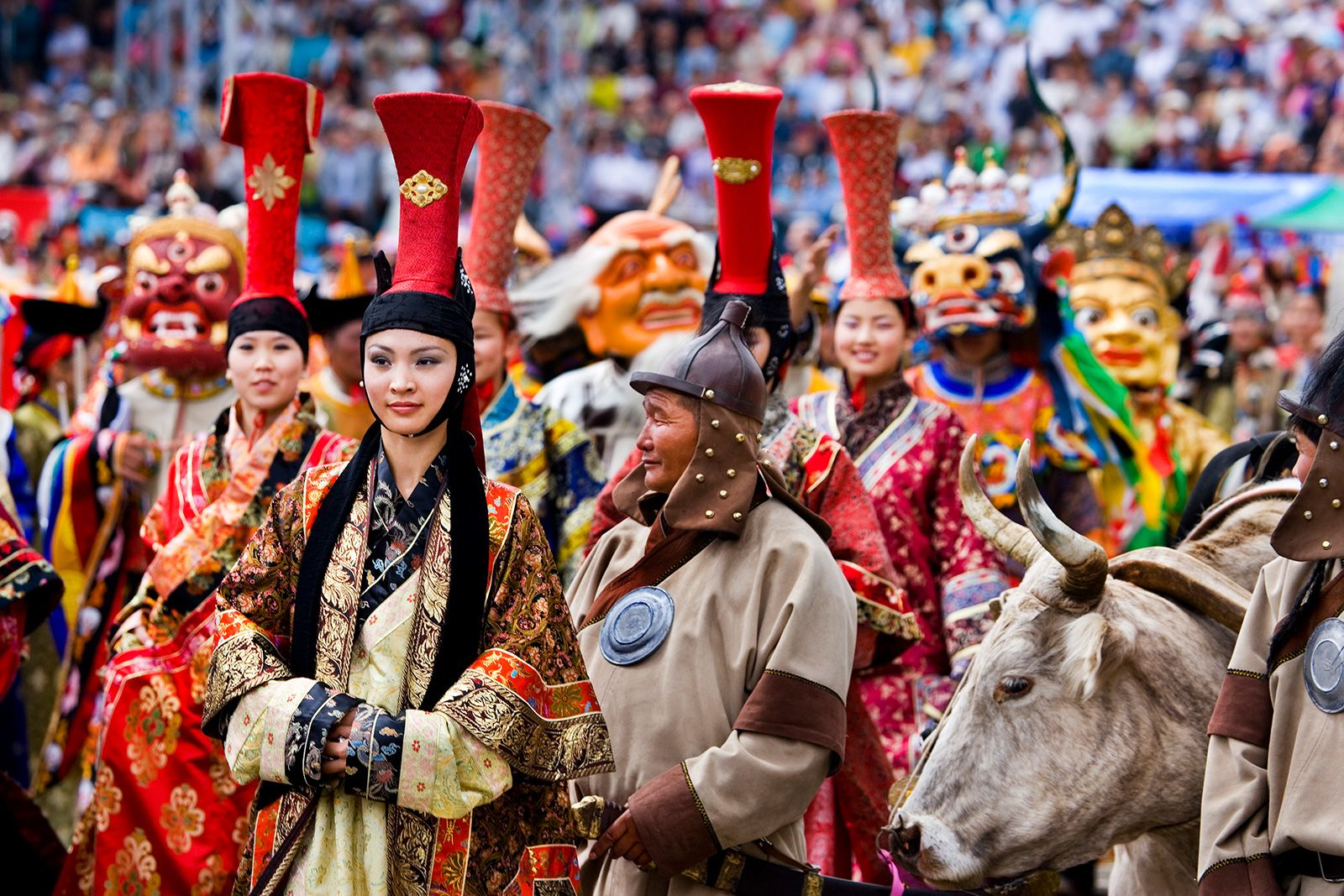
Naadam, also known as the "Three Manly Games," is Mongolia’s most important traditional festival, celebrated every year from July 11 to 13. This vibrant event showcases the country’s rich nomadic heritage through three main competitions: wrestling, horse racing, and archery. Mongolian wrestling is a test of strength and skill, where hundreds of wrestlers compete in traditional attire. Horse racing is a thrilling event where young jockeys ride across the vast steppe, covering distances of up to 30 kilometers. Archery, an ancient sport practiced since the time of Genghis Khan, highlights the precision and focus of skilled marksmen and women. Naadam is not just about sports—it is a grand celebration filled with colorful ceremonies, folk music, and traditional cuisine, offering visitors a unique opportunity to experience Mongolia’s deep-rooted culture and hospitality.
Places to visit
1.Terelj National Park
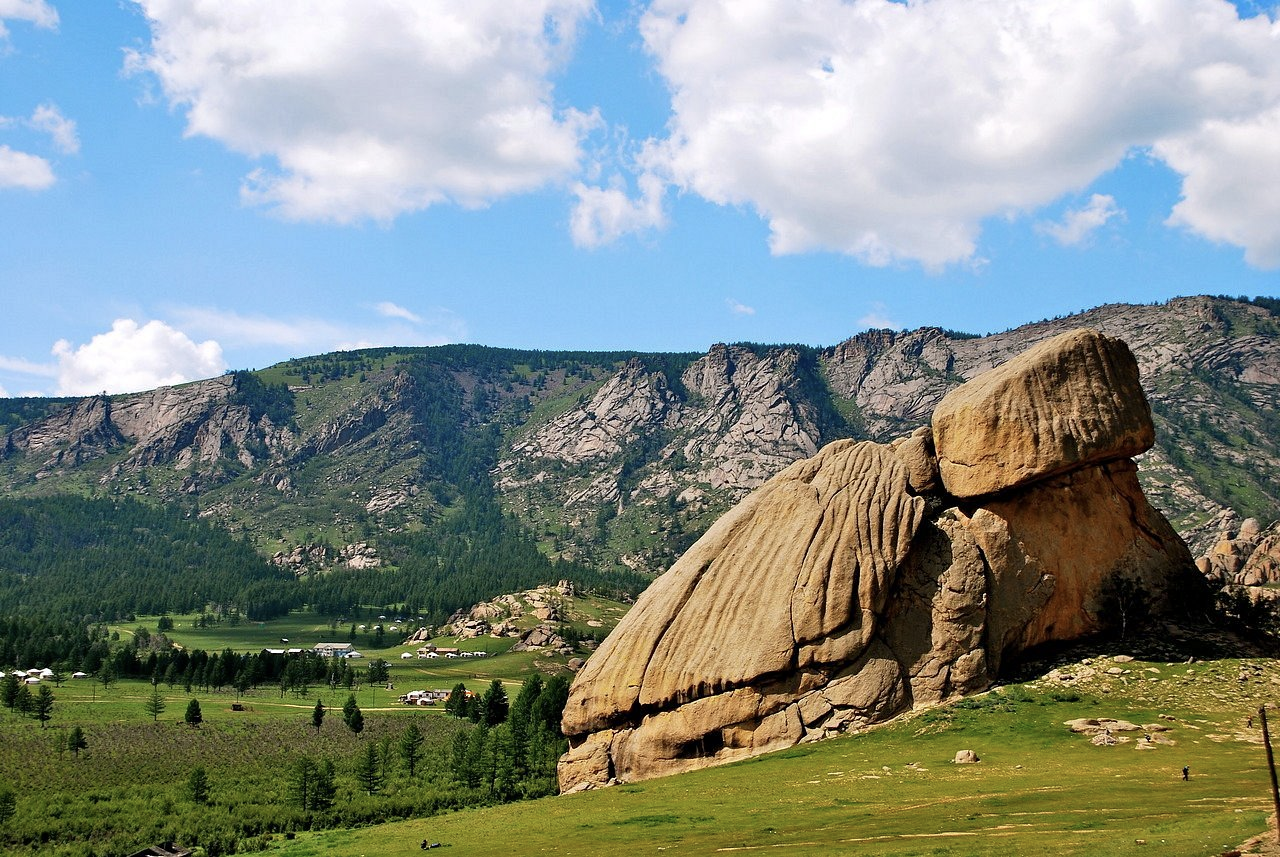
Located just outside Ulaanbaatar, Terelj National Park offers a quick escape into Mongolia's stunning natural landscapes. Famous for its unique rock formations like Turtle Rock and open grasslands, it's a perfect spot for those who love the outdoors. Visitors can go hiking, horseback riding, or enjoy the view. The park supports local nomadic families and helps preserve Mongolia’s culture and environment. Open all year, each season brings something new to see and do, from wildflowers in spring to snow sports in winter. Stay in a traditional ger camp for a true Mongolian experience. Come to Terelj for a genuine adventure in the heart of Mongolia’s wilderness.
Top Things to Do in Gorkhi Terelj National Park.
1. See Turtle Rock - The National Park is known for its outstanding rock formations. Among them, 24 m tall Turtle shaped rock is worth to see.
2. Hiking - Either walking through the green meadows in summer and snow-covered valleys in winter are amazing experiences. More picturesque views will reward you if you climb one of the hills or mountains.
3. Horse riding - Gorkhi Terelj National Park is a destination both for amateurs and experienced riders. Amateurs can ride an hour to several hours in the tourist zone while the adventure riders travel on horseback for several days among the pristine areas of the mountainous.
4. Yak/ox cart tour - Are you looking for doing spectacular things not traveling too far from Ulaanbaatar? If yes, you may take a yak cart tour or yak car supported trekking. This tour takes place in the less-traveled areas out of the tourist zone.
5. Rafting - Make your journey adventurous rafting on the Terelj River or Tuul River.
6. Visit temple - Visit the Ariyabal meditation temple located about 1 km from the Turtle Rock. You should walk 20-30 min after parking at the parking lot. The temple was built between 1998 and 2004 in a scenic and energetic area. The vista is expanse and picturesque when seeing from the temple elevation.
7. Visit nomads - The Mongolian tour is not complete without a visit or a stay with the nomadic family. Visit one of the nomadic families to glance at the nomadic way of life.
8. Stay in a ger - The tourist zone of the national park is full of ger resorts of different categories. Stay one of the gers and feel the uniqueness of the nomadic dwelling.
9. Try Archery - Not all, but few of the national park ger camps offer the archery experience.
10. Dog sledding - The national park is an easily accessible famous destination either in winter, where people travel for dog sledding among many other winter activities.
11. ATV & snowmobile - Rent and ride ATV in summer and snowmobile in winter.
2.Chinggis Khan Statue complex

Chinggis Khaan Statute complex is situated 54 km from Ulaanbaatar City, with a view of beautiful natural scenery on the bank of the Tuul River, a historical place where Chinggis Khan’s golden whip was found. Today, for a memory of the man of the millennium, a 40-meter-high stainless steel statue of Chinggis Khaan on horseback is the largest among the statues in the world. Inside the statue, we operate a restaurant, a souvenir shop, two museums, and a conference hall. Visitors can go up the statue using the elevator or the stairs to the head of the horse where they can have a panoramic view of the beautiful landscape.
Being a part of the Genghis Khan Statue Complex, 40 meters (130 ft) tall equestrian statue of Genghis Khan on horseback, was established in 2008 and made of 250 tonnes of stainless steel. The base consists of 36 supporting columns, representing 36 great Khans (Mongol kings) with the entrance gate to the complex being decorated with statues of the nine generals (noyons) of Genghis Khan. Be sure to go to the head of the horse through its chest and neck for a panoramic view of the surrounding landscape from the observation deck.
The project's designers intended to make the Chinggis Khaan statue become an iconic representation of Mongolia, much like the Eiffel Tower represents the French, the Statue of Liberty represents the Americans, the Great Wall represents the Chinese, and the Taj Mahal represents the Indians. The expectation in Mongolia is that this complex would give the country's tourism sector a fresh look
In addition, you can see the amazing archaeological findings at the Mongol Empire history museum, have the opportunity to wear the king's and queen's costumes for family photos, or simply get fascinated by one of the world's biggest Traditional Boot with a height of 9 meters.
Budget at least 1 hour, but 1.5 hours to be more sufficient. It's about a 1-hour drive from Ulaanbaatar, along the way, you would see the track of the trans-Siberian railway, Mongolian ger (tents), and if you are lucky, some herds of sheep/goats, etc.
If you are visiting Tsonjin Boldog Complex, consider combining it with a visit to Gorkhi Terelj National Park at the same time or some horse riding trip.
3.Gandantegchinlen Monastery
The Gandantegchinlen Monastery or often referred to also as Gandan Monastery is a Mongolian Buddhist monastery in the Mongolian capital of Ulaanbaatar that has been restored and revitalized since 1990. The Tibetan name "Gandantegchinlen Monastery" translates to "The Great Place of Complete Joy". Gandan became an important center for learning and practicing Buddha's teachings, not only in the country but for the entire Mahayana Buddhist community. See also, Buddhism in Mongolia.
Nowadays, over 150 monks live in the Gandantegchinlen Monastery. It houses about 25 meters tall statue of Megjid-Janraiseg - a sage who leads the men on the way to Truth. He represents compassion. Covered by a huge number of precious stones, this statue weighs more than 20 tons and is made of copper coming from the mines of Erdenet.
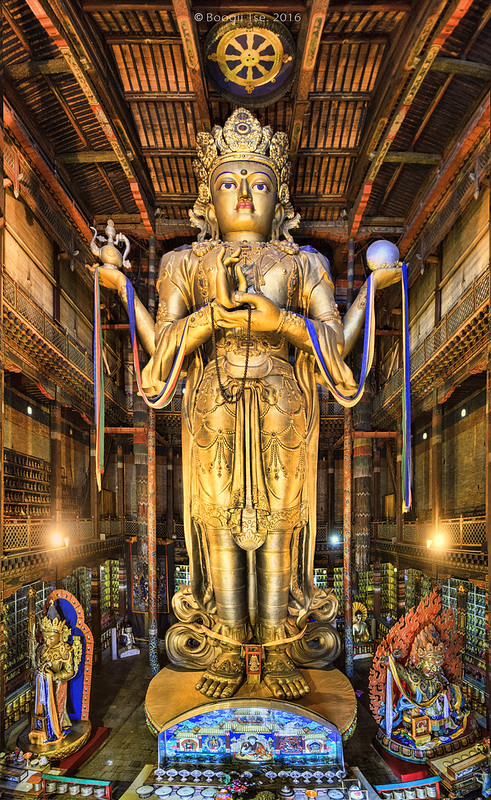
The Gandan monastery complex consists of Zanabazar Buddhist University, three temples for Buddhist service and veneration of Avalokiteshvara, three Buddhist Colleges of Buddhist Philosophy, a College of Medicine and Astrology, and two Tantric College. Many local Mongolian people from the countryside in their traditional costumes come to donate and pray. Especially, if you arrive in the morning and catch a service, it is fascinating, with drumming, chanting, and cymbals. The giant Buddha inside the Gandan Monastery is also very atmospheric, with lots of candles and gold plates. It's only about a twenty-minute walk from the square.
The Gandantegchinlen Monastery is worth visiting no matter what the season despite it not being heated. This is a great spot to escape the hectic life of the city and it’s indeed an island of tranquility. The eighth Bogd Khan gave his approval to the original statue in the hope that it might restore his vision, but the Russians are said to have melted it down to produce bullets. Nepal and Japan also contributed to the construction of the new sculpture. It is 26 meters in height, built of copper, and has glittering gold plating. It is considered a symbol of Mongolian Independence.
Tons of medicinal plants, a few Sutras, 2 million stacks of mantras, and a whole ger with furnishings can all be found inside the hollow sculpture. To the east of the temple are four Buddhist philosophy institutions, while to the west is Ondor Gegeen Zanabazar Buddhist University. Foreign visitors are not allowed to visit the university.
4.Gobi Dessert
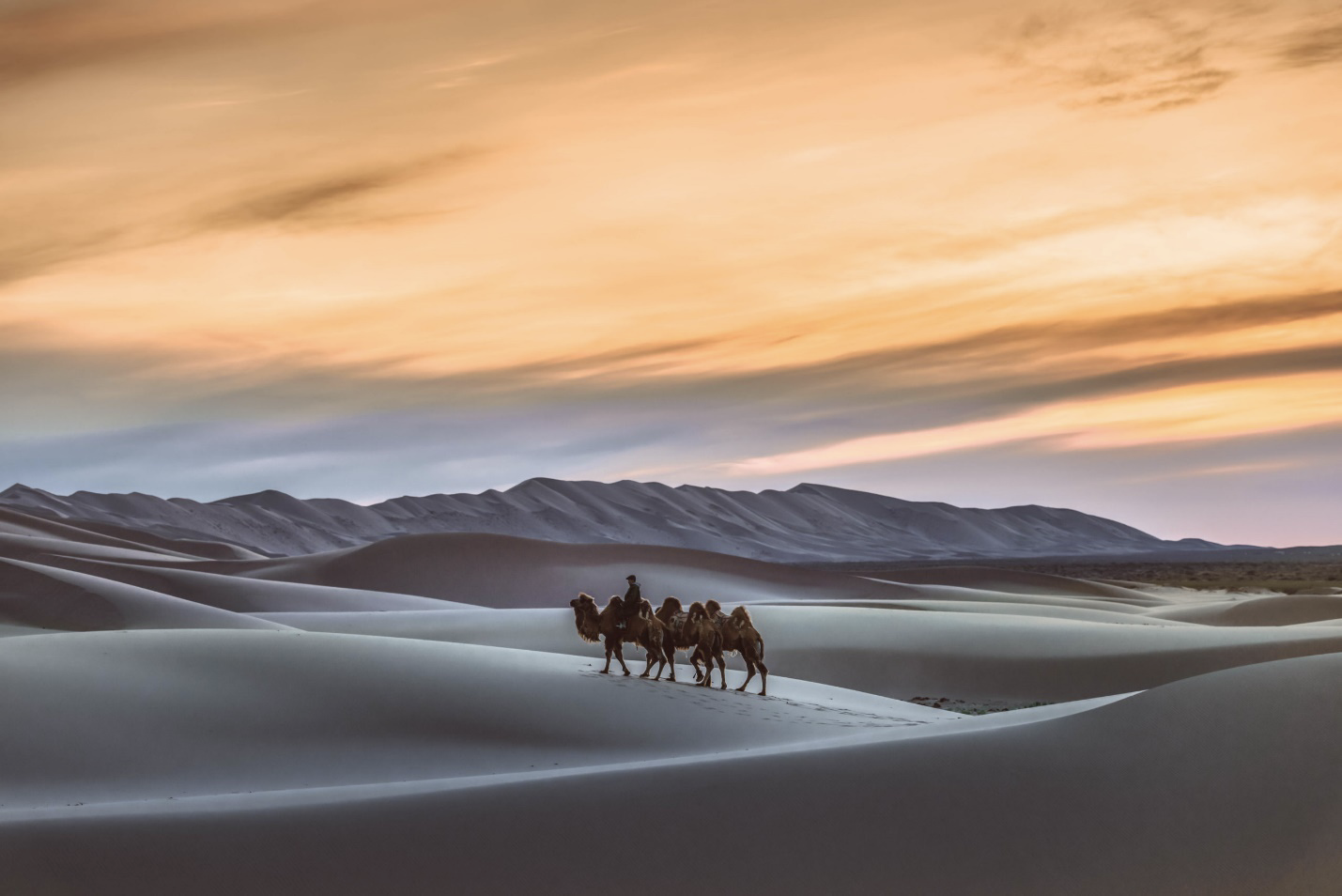
The Gobi Desert is one of the most beautiful places in the world, let alone Mongolia, and it almost takes half of the country. You will have the opportunity to ride camels and horses through the sand dunes, setup camps in the vast desert and stay overnight in the wilderness. Also, you will explore interesting rock formations, barren mountains, sand dunes, endless steppes and flaming cliffs. The sightseeing will keep you motivated during your journey through the stunning yet challenging desert. The weather conditions are extremely different between northern and southern parts of Mongolia and it varies from 0° C up to 40° C.
Places to visit: Khongor Sand Dunes, Yol Valley, Bayanzag / Flaming Cliffs, Khermen Tsav Canyon, Khamaryn Khiid Energy Center, Tsagaan Suvarga / White Stupa
Activities in the Gobi desert:
Besides all the sightseeing, there are a lot of activities you can do when you are traveling to the Gobi desert. To optimize the ultimate Gobi experience, try the following activities:
Mongolia is famous for its Bactrian camels. So accordingly, camelback riding through the sand dunes is a must when it comes to visiting the Gobi desert.
Locals strongly believe the Khamaryn Khiid is an energy center of the world. Try chakra healing and energy cleansing at Khamaryn Khiid.
As stated before, Yol Valley is stunningly beautiful and refreshing, considering it is right in the middle of the hot and dry Gobi desert. Hiking through the cool valley is an activity you do not want to miss.

There are some places you cannot reach with a vehicle. In that case, we suggest you to ride a horse to get to those places. Because, one, it is too far to walk there. Two, even if it is close enough to hike, why choose a boring walk when you can do horseback riding like a real Mongolian nomad?
If you are planning to take a road trip around the Gobi, it takes quite a few days to complete it. Use this chance to camp outside under the clear blue sky. Read more about it in our Camping Guide.
Did you know that camel herders use a special technique to console camel cows? Sometimes, when a camel cow gives birth to a calf she rejects her offspring due to various stress related reasons. And when that happens a Morin Khuurch will play a song called “Khoosloh” to relieve the stress. Watching camel cow consoling via Morin Khuur melody is truly a unique experience you cannot find anywhere else in the world. The famous docu drama movie "The Story of the Weeping Camel" is about this unique ritual.
During your trip you can take a break from camping and stay with a local family inside Ger instead. The Gobi people are known for their hospitality and it will give grant you a deep look into their lifestyle.
The beauty of the Gobi desert is too precious to just save inside your memory. So of course you want to capture it on your camera as images or a video. Check out the online photography tutorials from the famous german landscape photographer @muenchmax that was filmed in the Gobi or follow his paths on a self drive trip with FollowTheTracks. Max is already hosting a mentorship tour twice a year for 9 selected participants.
The Gobi is an offroad paradise with only a few paved roads. Sand tracks, gravel and a lot more challenges guarantee a fun self-drive experience in this unique environment. Rent a car from SIXT and experience it
5.Karakorum – Ancient Capital of Mongol Empire
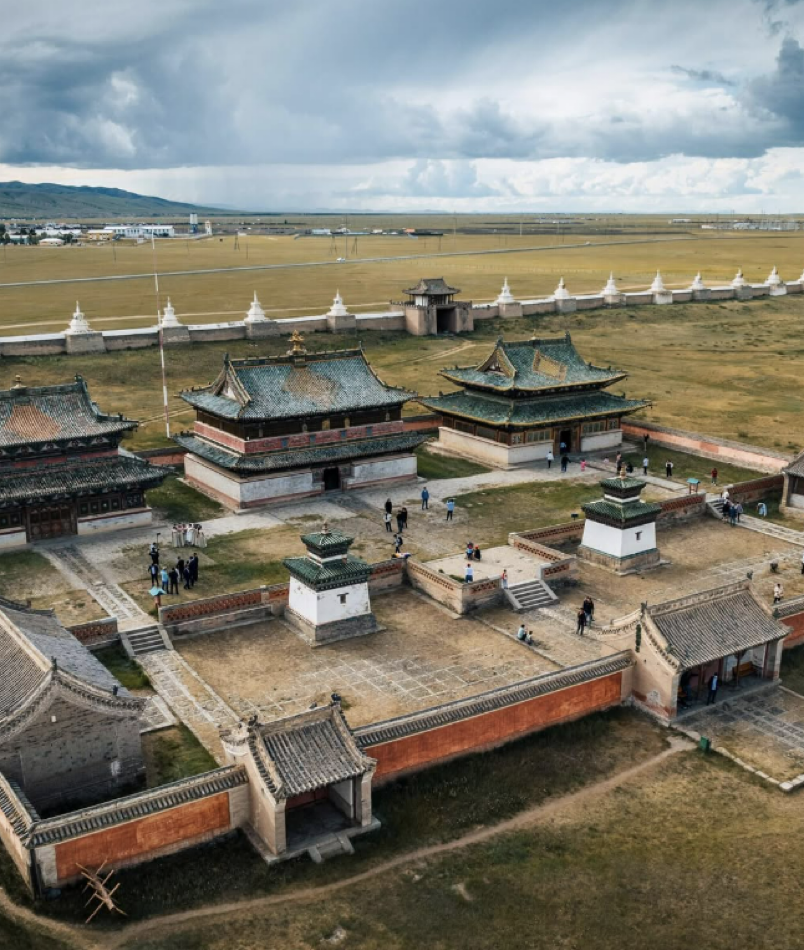
The ancient capital of the Mongol Empire, back then known as Karakorum was located 350km away from the current capital Ulaanbaatar at the upper part of UNESCO World Heritage site Orkhon Valley.
The construction was begun by the orders of Chinggis Khaan, but it was completed finally at the time of his successor Ogedei Khaan. At its zenith, the city was one of the most multicultural places in the world. Its location along the famed Silk Road and status as the capital of an empire that stretched across continents brought it great wealth.
There were large districts for Mongols, Chinese and Persians. Tolerance for religion ensured that Buddhists, Pagans, Muslims, Taoists and Christian communities thrived alongside each other.
Karakorum’s decline began with the moving of the capital to Beijing by Kublai Khan and subsequent civil wars that took place at the end of the XIII century and the beginning of the XIV century. (Source: Juulchin Tour)
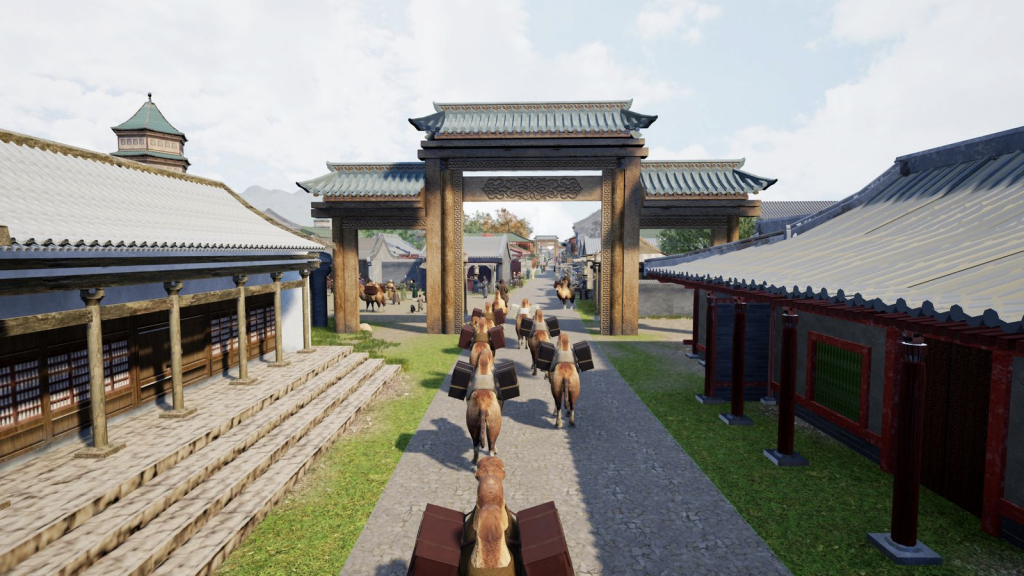
At the center of Karakorum was the palace complex, the residence of the Great Khan and the hub of political power. The Tumen Amgalan Ord palace, constructed by Gedei Khan in 1235, was a testament to the wealth and influence of the Mongol Empire. Its grandeur, unmatched and designed to impress the mongol elite, featured: gilded columns, pavilions, gold and silver basins, a wine cellar
The palace walls were adorned with fine paintings by Khitan artists, showcasing the empire’s appreciation for art and craftsmanship.
One of the most striking features of the palace complex was the Silver Tree, an impressive mechanical tree with golden serpents around its trunk. When the emperor wished to serve drinks to his guests, a mechanical angel at the top of the tree would sound a trumpet, and the serpents’ mouths would pour out four different alcoholic beverages into silver basins at the base of the tree. This awe-inspiring marvel of engineering and artistry perfectly encapsulated the grandeur and sophistication of Karakorum’s palace complex.

Arrival information
Read More